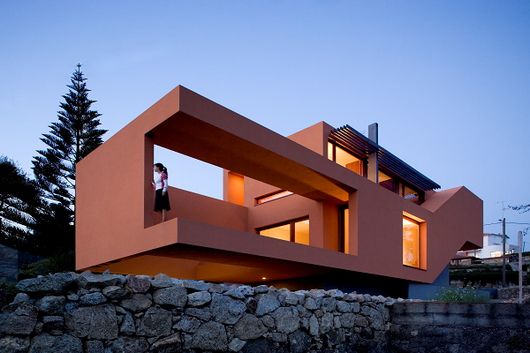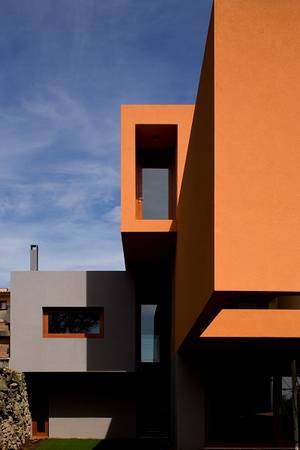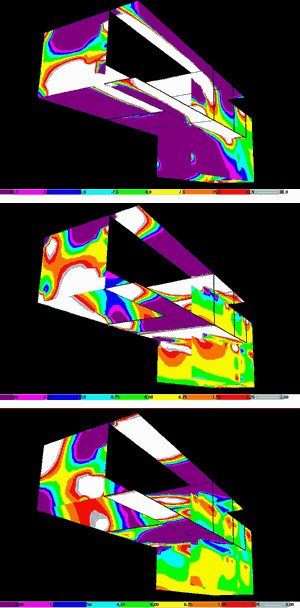728x90

Preliminary Design: 2000; Final Design: 2001
Construction: 2002-2005
Architecture: Nuno Grande (1966) and Pedro Gadanho (1968)
Collaborators: Rita Cantante, Cristina Silva, Mariana Martins, Matilde Seabra
Engineering: NEWTON, Consultores de Engenharia, LDA (Structural); ENGILIMA, Projectistas e Consultores, LDA (Water and Sewage Networks, Heating);
MCP, Técnicas de Instalação (Electrical Networks)
Landscape Design: Nuno Grande and Pedro Gadanho
Client: Mário and Arminda Barbosa
Contractors: José Meixedo Novo, LDA (Stage 1 – Structures);
Daniel Ramos Pereira, LDA (Stage 2 – Finishings)
Construction supervisor: Paulo Alves (ENGILIMA)
Final cost: 300.000 Euros; 1000 Euros/m2
Built area: 300 m2




















Hybrid Orange Strategies
At a certain moment, JLCG stated that orange was the new black. But maybe it is the new white? At least, orange certainly confuses the mythology of white as an equivalent of abstraction. But is orange less abstract? Painters would say no. Colour symbologists would say otherwise. Perhaps. Yet – apart from uncannily contextual reasons – orange is, after all, just as provocative and sexy a way to stress and mediate and promote what is not so obvious in contemporary production.
Think. What may, ultimately, no longer be so obvious to architectural functional “analphabets”? The emotional force of the cantilever, the ironic memoirs of French movie-auteurs, the twisting of reality/landscape to fit the artificial architectural frame, the impact of the pure gaze, the expression of viscerality. Gibberish, in fact. Aesthetic pleasure in reverse. Or maybe not.
After all “else” has become aestheticized: aesthetic pleasure certainly has to come with a twist. Maybe that pleasure is the anarchic pleasure of subverting rules – those which only those people who master the rules can truly achieve (Of course I solely mean those glorified engineers known as ”architects” as opposed to “builders”, but if an erudite example is required just remember that column that doesn’t reach the ground under bonjour tristesse)
If you produce the unnamable, then you get away with crime. If your cantilever – or your concept – doesn’t fit the categories that legislations find fit, than maybe you can just get away with it. And subversion saves your project from just being other object deformed and amalgamated by convention. Legal and otherwise.
The latest Pritzker Prize, Paulo Mendes, would say that you have to create problems in order to solve them.
Welcome problems.







그리드형
'REF. > Architecture' 카테고리의 다른 글
| [ Eduardo Berlin Razmilic ] House 2 (0) | 2010.04.08 |
|---|---|
| [ Felipe Assadi ] 20X20 HOUSE (0) | 2010.04.08 |
| [ Polidura + Talhouk Arquitectos ] Binimelis House (0) | 2010.04.07 |
| [ Cloud 9 - Enric Ruiz-Geli ] Villa Bio (0) | 2010.04.06 |
| [ Marcio Kogan ] Osler House, Brasilia (2) | 2010.04.05 |